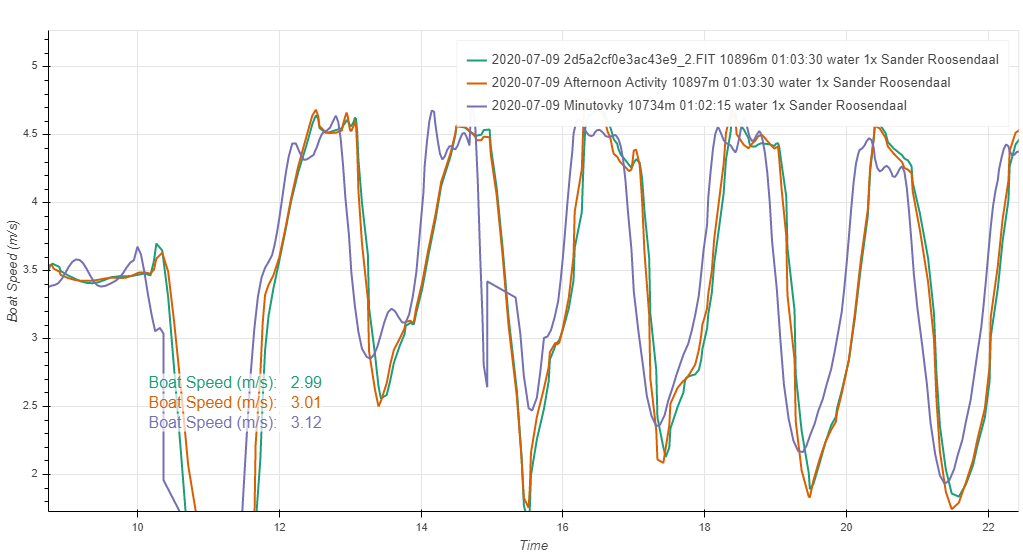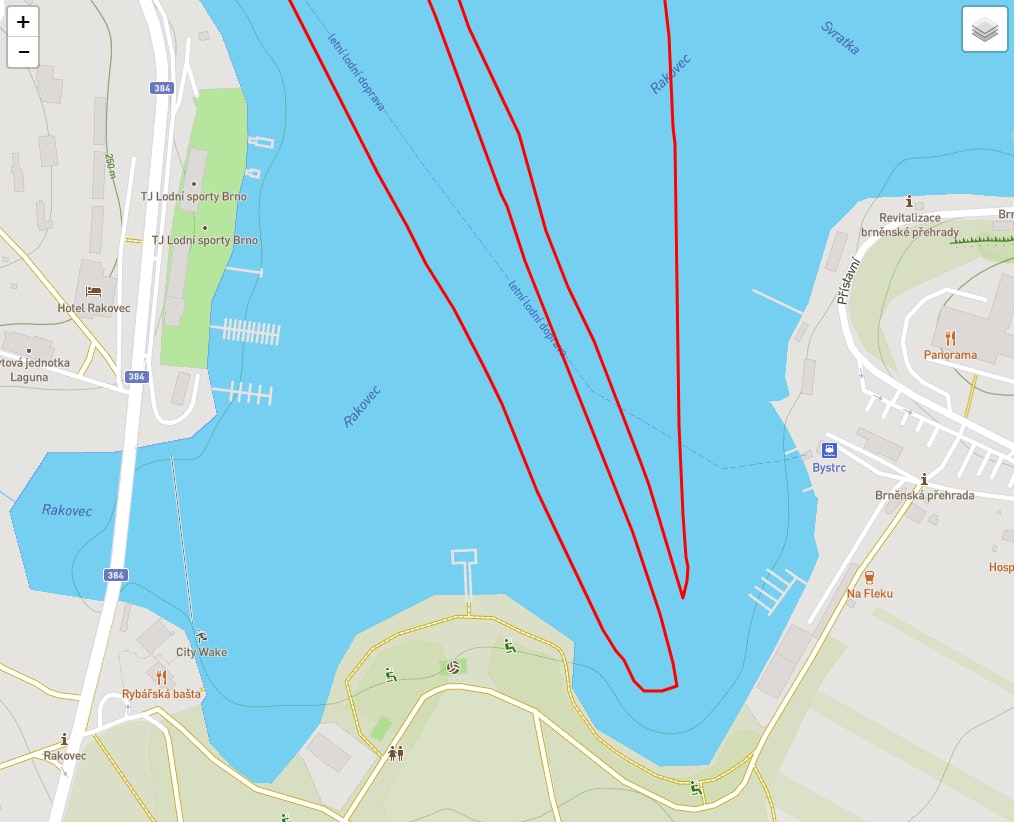
Here’s a comparison between a Garmin VivoActive watch (worn on wrist) and NK SpeedCoach GPS. Data collection method:
– NK SpeedCoach with Data Pack. Device synced with NK LiNK LogBook and then CSV data export to Rowsandall.com via email. Heart rate was captured using a Polar OH1 optical Heart Rate band worn on left upper arm. Auto Pause was switched off.
– Garmin VivoActive 3 worn on right wrist. Heart rate was measured using internal optical sensor. I used the “Rowing” activity from the internal software, no ConnectIQ app. For the data export I used two parts. (1) Direct download of FIT file from Garmin Connect to Rowsandall.com through the API. Data was on Rowsandall.com seconds after I synced the watch with the Garmin Connect App. (2) Garmin Connect to Strava. Auto import from Strava to Rowsandall.com through the Strava API.
– I switched on both devices at almost the same time, but the Garmin watch starts recording immediately, while the NK SpeedCoach waits for first boat movement. Both devices were switched off when I was back at the dock, but the Garmin watch ran for a few more minutes than the NK SpeedCoach.
Distance Measurement
The purple line is the NK SpeedCoach, green and orange are data from Garmin. Both Garmin data paths have identical data. Over nearly 11 km, the NK SpeedCoach measured 163 meters less, a difference of 1.5%. The difference is probably caused by GPS accuracy differences.
Stroke Rate
This is a section of the stroke rate data, looking at the last part of the warming up and the first few intervals of the training session. Again, purple is NK SpeedCoach, the two Garmin data sources are identical, and the SpeedCoach started recording a bit later than the Garmin watch, so you have to shift the purple curve slightly to the right for comparison.
Stroke rate data are pretty comparable. It looks like slight differences in motion detection algorithm and averaging result in a slightly slower response on big transitions (see for example around the 12th minute). Also, the NK SpeedCoach picked up strokes when I was turning the boat between 10 and 12 minutes. But I think the stroke rate data are pretty good.
Boat Speed (pace)
I know how rowers like to talk about pace (time over 500m). However, here we are trying to look at data quality, so I prefer to use the boat speed in meters per second. Again, the NK SpeedCoach is the purple line. Interestingly, the boat speed curves are slightly different for the two data paths for the Garmin watch. Perhaps Strava does some secret magic to velocity data? The differences are negligible, though.
The NK SpeedCoach seems to react slightly faster to abrupt speed changes on the second interval (around minute 14 in the chart), but on more gradual ramp up of the speed the Garmin watch is perfectly capable of keeping up. This is good.
To compare absolute speed data, I have calculated the average speed over 5 intervals of the second series, taking care to start data at the ramp up of the first interval and stopping at the end of the 5th interval. Garmin gave 3.78 m/s (2:12.3 per 500m) and NK SpeedCoach gave 3.74 m/s (2:13.7 per 500m) which is a 1.0 % difference for a data set that has highs and lows. Filtering out all strokes below 24 SPM, I get 4.25 m/s (1:57.6 per 500m) for NK and (1:56.6 per 500m) for the Garmin, again a difference of about 1%.
Heart Rate
This is the only part where the wrist watch disappointed. The Garmin Vivoactive is more a health watch than a activity watch. It’s useful to measure things like resting heart rate and to detect activity. On my (hairy) wrist, it did a very poor job of measuring heart rate. If you want to use the Garmin watch to measure things like training load using heart rate data, it is recommended to buy a ANT+ capable heart rate strap and pair it with the watch.
Map
 This map is made using the NK SpeedCoach’s GPS data.
This map is made using the NK SpeedCoach’s GPS data.
This is the same section using data from the Garmin Watch. Nearly identical.
Conclusion
If combined with a heart rate belt, the Garmin VivoActive 3 watch can be a very useful entry measurement device for rowing data.
Of course, you get only the basics (Time, Distance, Pace, SPM, Heart Rate) plus its derivative Distance per Stroke, but to be honest, to get more (Power, Force, stroke arc length) you’ll have to invest in a smart oarlock like the NK Empower or use a phone app that specializes in boat acceleration data (Rowing in Motion, Quiske).






